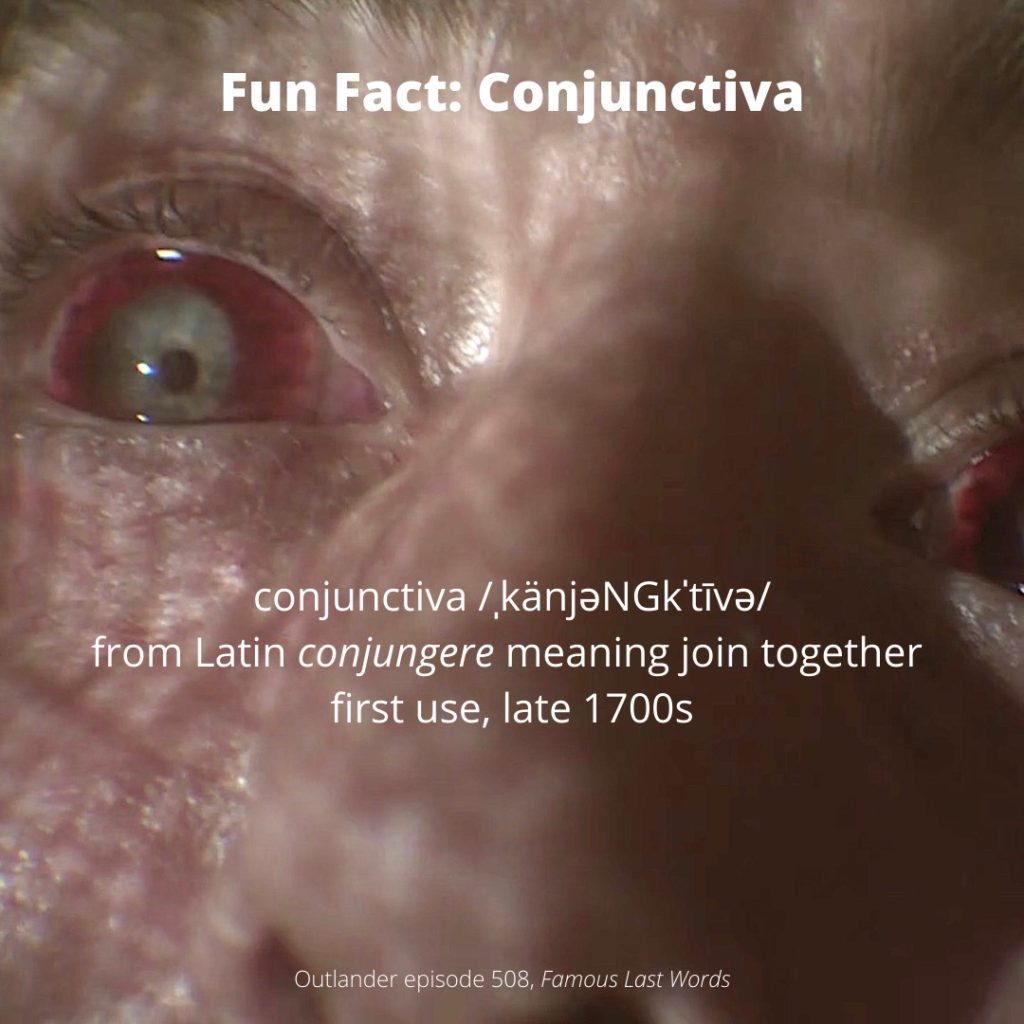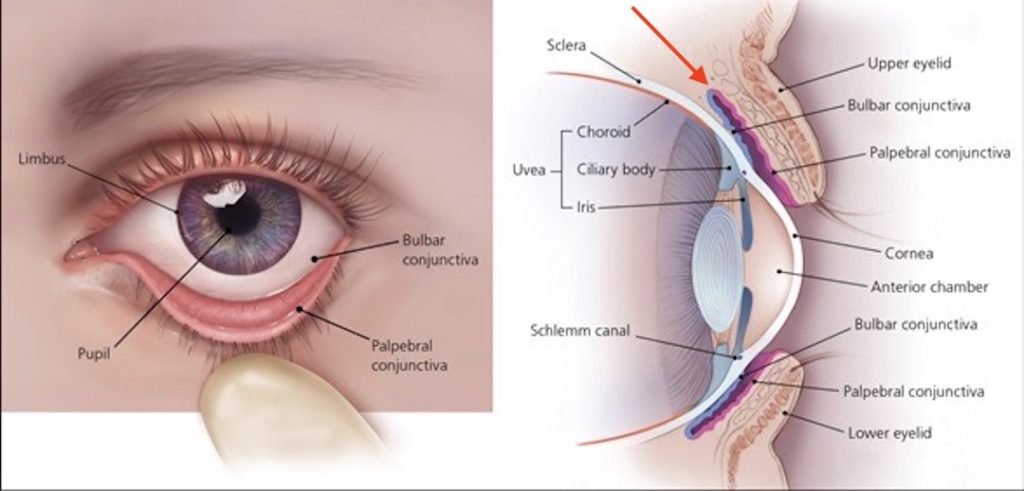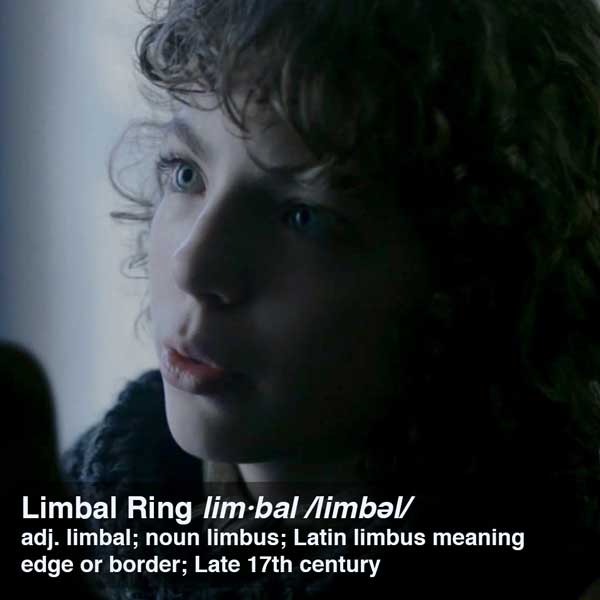
Anatomy Def: Conjunctiva is a clear membrane covering part of the eyeball and lining inside of eyelids.
Outlander Def: Roger’s bloodied and abused tissues as he gazes at the world through his burlap hood!!! 😥
Learn about the conjunctiva in Anatomy Lesson #30, Aye, Eye – The Eyes, Part 2.
Conjunctiva is a clear, thin mucous (adj.) membrane of the eye. It is a mucous membrane because, indeed, it contains glands and cells which secrete mucus (n.). This sets it apart from serous membranes that do not secrete mucus.
The conjunctiva has two parts:
-
- Bulbar conjunctiva: Covers front part of sclera (“white” of the eye)
- Palpebral conjunctiva: Lines inner surfaces of eyelids
Is the conjunctiva useful? Oh, indeed it is! 👏🏻👏🏻👏🏻 It performs two important functions:
-
-
- Produces mucus and tears to help lubricate the surface of eye
- Protect against microbes entering the eye which is vulnerable to the outer world
-
The conjunctiva contains many small blood vessels that are not especially noticeable unless stimulated to dilate. Dilation allows for increased tear and mucus release. What might cause such a response?
-
- Allergens, such as pollen
- Irritants, such as air pollution, makeup, cosmetics
- infections
- Contact lenses
- Fatigue
- Hypoxia (reduced oxygen supply)
But, Roger’s conjunctivae are bloody! Why??? This occurs because strangling increases pressure in the conjunctival blood vessels and they swell. The vessels then burst from straining for air and against the rope!
Slowly rewatch the color version of the hanging; you will see blood blooming during his conjunctival bleed. Or, more precisely, subconjunctival bleed, as blood collects between conjunctiva and sclera!
The special effects are excellent, btw! In Rik’s recent Q and A, he explains he was fitted with special contact lenses and thought CGI was also added. I agree, as I see an increase in conjunctival blood during the footage.
Ergo: If Roger every gets his hands on William Buccleigh MacKenzie!!! 💪🏻💪🏻💪🏻
Fun Fact: Some people worry that a contact lens could wander towards the back of the eyeball and reach the brain. For several anatomical reasons, this doesn’t happen. One major reason is the conjunctiva folds on itself forming a closed pouch all the way around the eyeball. The figure explains 👇🏻.
The L panel shows the bulbar and palpebral conjunctiva from a frontal view. Note: the bulbar conjunctiva stops at the edge (limbus) of the cornea. It does NOT cover the cornea!
The R panel shows a vertical section through the eyeball. The bulbar conjunctiva is shown as blue and the palpebral conjunctiva is red. A red arrow marks the pocket where the two layers meet. This blind pocket encircles the entire eyeball. Hence, a lost contact lens can only travel as far as the blind pocket. Want to know what to do about a “lost” contact lens? This is a pretty good website!

Try This: Gaze into a mirror. Locate the clear membrane overlying your sclera. Can you see its tiny blood vessels? This is your bulbar conjunctiva. Gently pull down on the lower eyelid. See the glistening surface? This is your palpebral conjunctiva. Got it? Good job!
Herself explains Roger’s horrific ordeal in The Fiery Cross. Accurate details and explanations accompany her descriptions coupled with fantastic story-telling. Read the books, folks! 🙏🏻
The others had strangled, slowly. The bodies were twisted, held by their bonds in the final postures of their struggle. One man—one body—was cut down as I rode up, and carried past me in the arms of his brother. There was not much to choose between their faces, each contorted, each darkened in its separate agony. They had used what rope was to hand; it was new, unstretched. Roger’s toes trailed in the dust; he had been taller than the rest. His hands had come free; he had managed to hook the fingers of one hand beneath the rope. The fingers were nearly black, all circulation cut off. I couldn’t look at his face at once. I looked at Brianna’s, instead; white and utterly still, each bone and tendon set like death.
See Roger’s bloody conjunctivae in Outlander, episode 508, Famous Last Words! ❤️ Roger!
The deeply grateful,
Outlander Anatomist
Follow me on:
-
- Twitter @OutLandAnatomy
- Join my Facebook Group: OutlandishAnatomyLessons
- Instagram: @outlanderanatomy
- Tumblr: @outlanderanatomy
- Youtube: Outlander Anatomy
Photo credits: Sony/Starz; www.aafp.org

